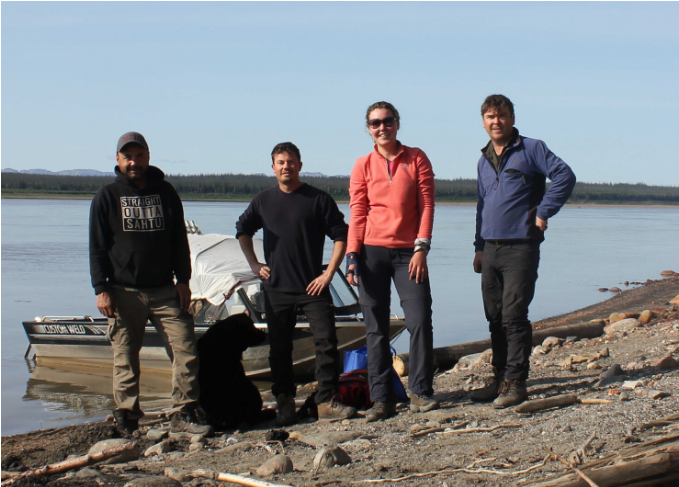Research Roundup: narrating climate changes
Research and impact 22nd June 2020
A recent blog post for Geoscience for the Future by Dr Emily Dearing Crampton-Flood, ‘How bacteria from a past greenhouse world can help to predict Earth’s future climate‘, discusses the ways that organic geochemistry and computer modelling can help to reconstruct the story of our Earth. Emily’s research investigates the effects of greenhouse gas emissions and a meteor impact on the Earth’s climate and the ways in which fieldwork to collect samples of fossilised bacteria from Cretaceous and Palaeogene rock informs her findings.
“Each horizontal layer of coal has the power to paint us a detailed picture of the climate millions of years ago, and could therefore help us to predict what sort of changes we can expect in the upcoming few centuries…”

Dr. Emily D.C.-Flood started her three year postdoc in March 2019 at the Department of Earth and Environmental Sciences, and she is working with Dr. Rhodri Jerrett and Dr. Bart van Dongen on a project investigating the ‘Equable Earth’ hypothesis. This project aims to understand what latitudinal temperature gradients were like in a ‘greenhouse’ world, specifically looking at the latest Cretaceous and early Paleogene. The second aim of the project is to investigate what temperature changes occurred just before and after the infamous Cretaceous-Paleogene boundary (~66 million years ago), where the last major extinction occurred. By generating high resolution temperature records using organic biomarkers extracted from coal seams in North America, Emily and the research group (including Dr. Sabine Lengger and Professor Greg Price at Plymouth University) will attempt to answer these questions and shed some more light on some vigorously debated scientific questions about this major transition.
Read Emily’s post for Geoscience for the Future here.

climatecomputer modellingCretaceous-Paleogene boundaryEquable Earth hypothesisGeoscienceGeoscience for the Futuregreenhouse worldorganic biomarkersorganic geochemistrytemperature records




Leave a Reply